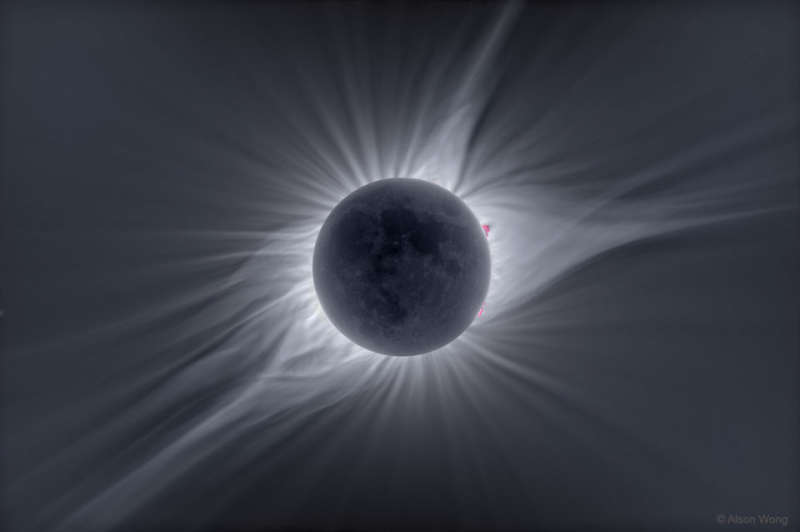Credit & Copyright: Alson Wong
Explanation:
Most photographs don't adequately portray the magnificence of the
Sun's corona.
Seeing the
corona first-hand during a total
solar eclipse is
unparalleled.
The
human eye
can adapt to see coronal
features and
extent that average cameras usually cannot.
Welcome, however, to the
digital age.
The featured picture is a combination of forty exposures from one thousandth of a
second to two seconds that, together, were
digitally combined and processed
to highlight faint features of the
total solar eclipse that occurred in
August of 2017.
Clearly visible are
intricate layers and glowing caustics of an ever changing mixture of hot gas
and
magnetic fields in the Sun's corona.
Looping prominences appear bright pink just past the
Sun's
limb.
Faint details on the night side of the
New Moon can even be made out,
illuminated by sunlight reflected from the dayside of the
Full Earth.
1999 2000 2001 2002 2003 2004 2005 2006 2007 2008 2009 2010 2011 2012 2013 2014 2015 2016 2017 2018 2019 2020 2021 2022 2023 2024 2025 |
Yanvar' Fevral' Mart Aprel' Mai Iyun' Iyul' Avgust Sentyabr' Oktyabr' Noyabr' Dekabr' |
NASA Web Site Statements, Warnings, and Disclaimers
NASA Official: Jay Norris. Specific rights apply.
A service of: LHEA at NASA / GSFC
& Michigan Tech. U.
|
Publikacii s klyuchevymi slovami:
total solar eclipse - Solnechnaya korona - polnoe solnechnoe zatmenie
Publikacii so slovami: total solar eclipse - Solnechnaya korona - polnoe solnechnoe zatmenie | |
Sm. takzhe:
Vse publikacii na tu zhe temu >> | |
